I found it interesting that there was a specimen of N. nigracens collected in South Dakota: antmaps.org
Doesn't surprise me. Neivamyrmex nigrescens have a very wide distribution range.

I found it interesting that there was a specimen of N. nigracens collected in South Dakota: antmaps.org
My Main Journal | My Neivamyrmex Journal | My Ant Adoption | My YouTube
Join the TennesseeAnts Discord Server! https://discord.gg/JbKwPgs
So are you gary? Nice to meet you, if so. Also, if so, my name is Brian.
Cool vids. Amazing macro images. Such hairy faces. Wild.
Yes, I am Gary, Thanks. Nice to meet you Brian.
My process of feeding Neivamyrmex.
I need to weigh out minimally 8 grams of brood food which currently is either brood of Solenopsis invicta or subterranean termites. I will upload soon a video of how I collect Solenopsis invicta brood in the field.
I house the field collected brood/fire ants in larger fluon lined trays. When I am preparing to feed I remove a quantity of brood with soil into the small fluon lined container in the photo and place a piece of shard for the ants to collect the brood under. This allows for me to more easily separate brood from excess soil. I allow them to settle and collect the brood under the shard which usually takes half an hour or so. I use a vacuum to remove any excess ants and most of the soil after the brood has been gathered under the shard as in the photo. I collect the brood and weigh it out with remaining soil and aspirate as many fire ants as I can out of the brood. I place the aspirated ants in vial in freezer to kill them for disposal.
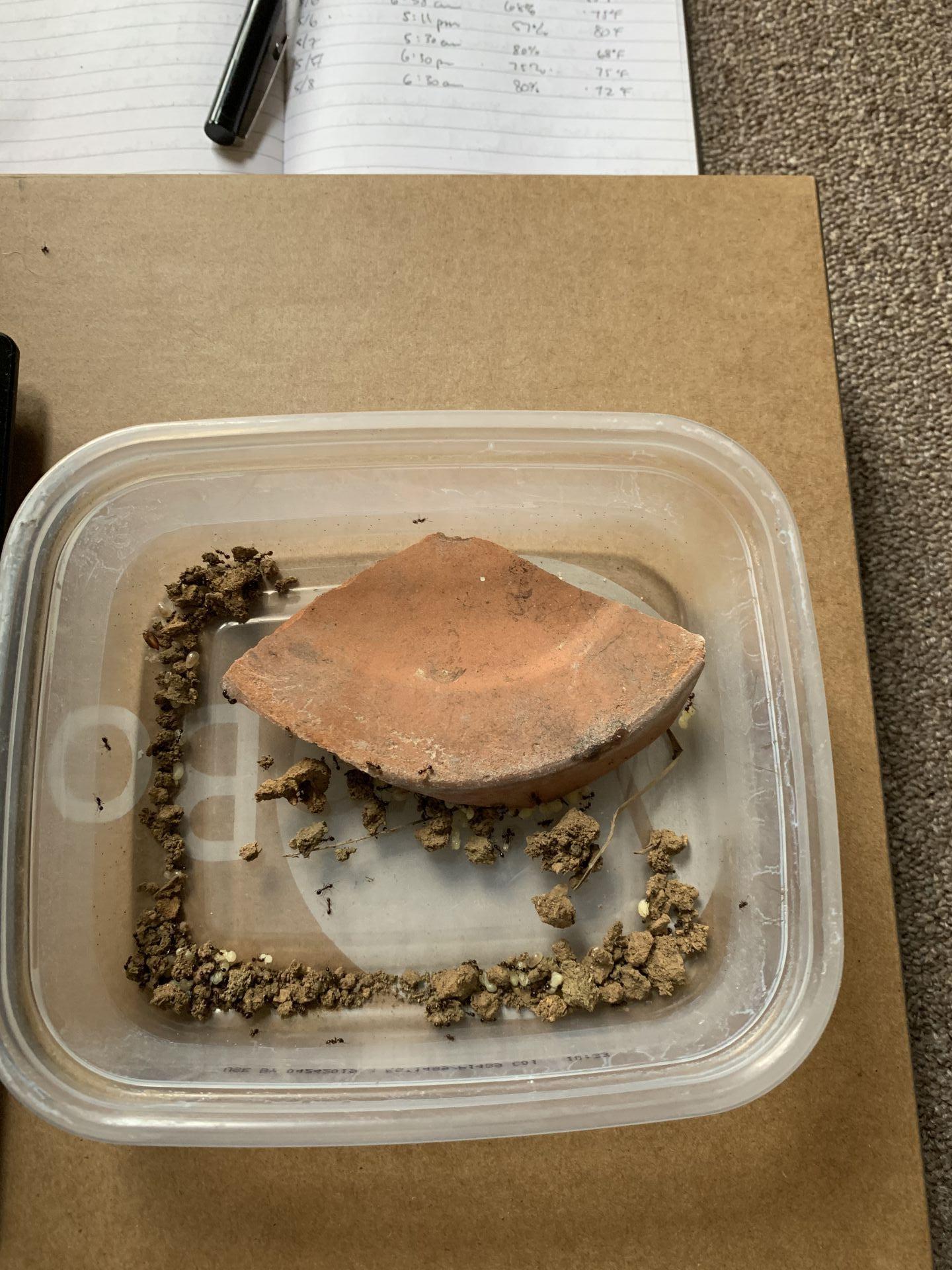
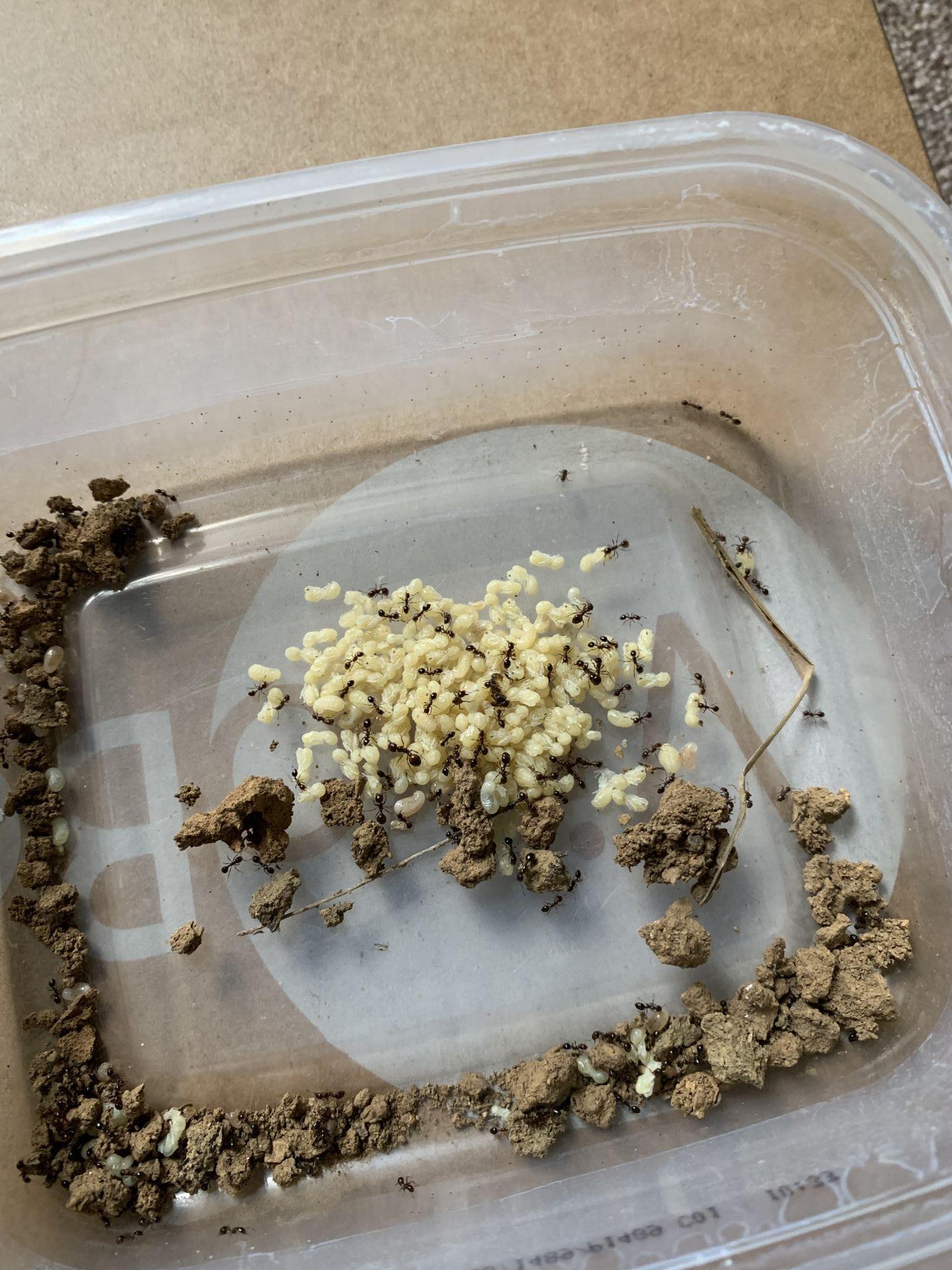
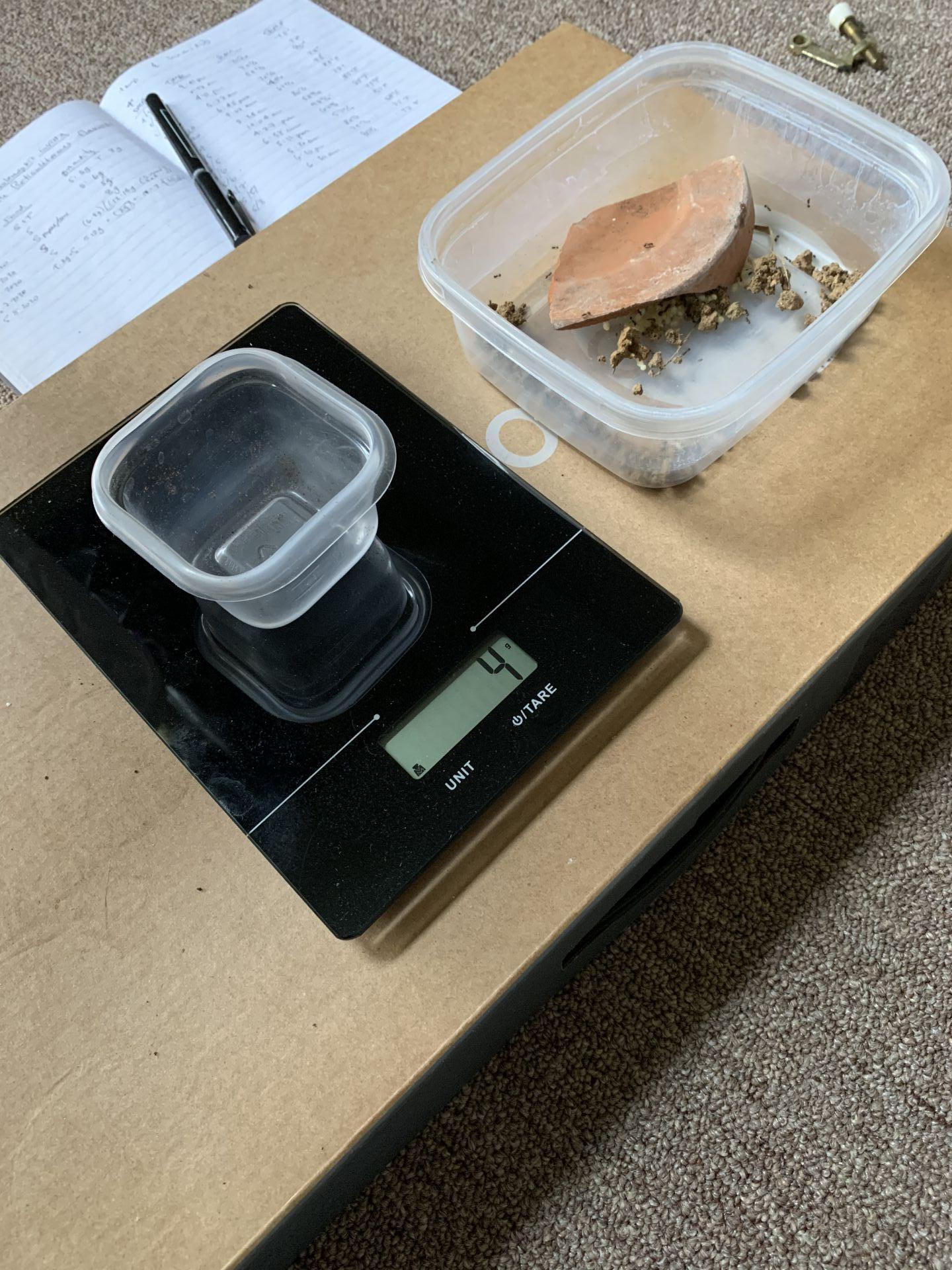
Outcome: 13grams of brood-food.
Nice thread! Do they have space to forage and move extended distances? (like a maze where they can traverse long distances within a confined space)
Just curious how that effects their behavior in captivity.
Instagram:
nurbsants
YouTube
California Ants for Sale
Unidentified Myrmecocystus
https://www.formicul...ls-near-desert/
Undescribed "Modoc"
https://www.formicul...mp-ca-5-4-2017/
Camponotus or Colobopsis yogi:
https://www.formicul...a-ca-1-28-2018/
Camponotus us-ca02
https://www.formicul...onotus-us-ca02/
Unidentified Formica
https://www.formicul...l-ca-6-27-2020/
Pencil Case and Test Tube Formicariums
https://www.formicul...m-and-outworld/
Bloodworm Soup
https://www.formicul...bloodworm-soup/
That mandible sure looks like N. opacithorax to me.
Nice thread! Do they have space to forage and move extended distances? (like a maze where they can traverse long distances within a confined space)
Just curious how that effects their behavior in captivity.
Yes, there are three containers each 24"x16"x7" interconnected with 5/8" wide tubing with the possibility of connecting more.
Edited by PurdueEntomology, May 8 2020 - 4:21 PM.
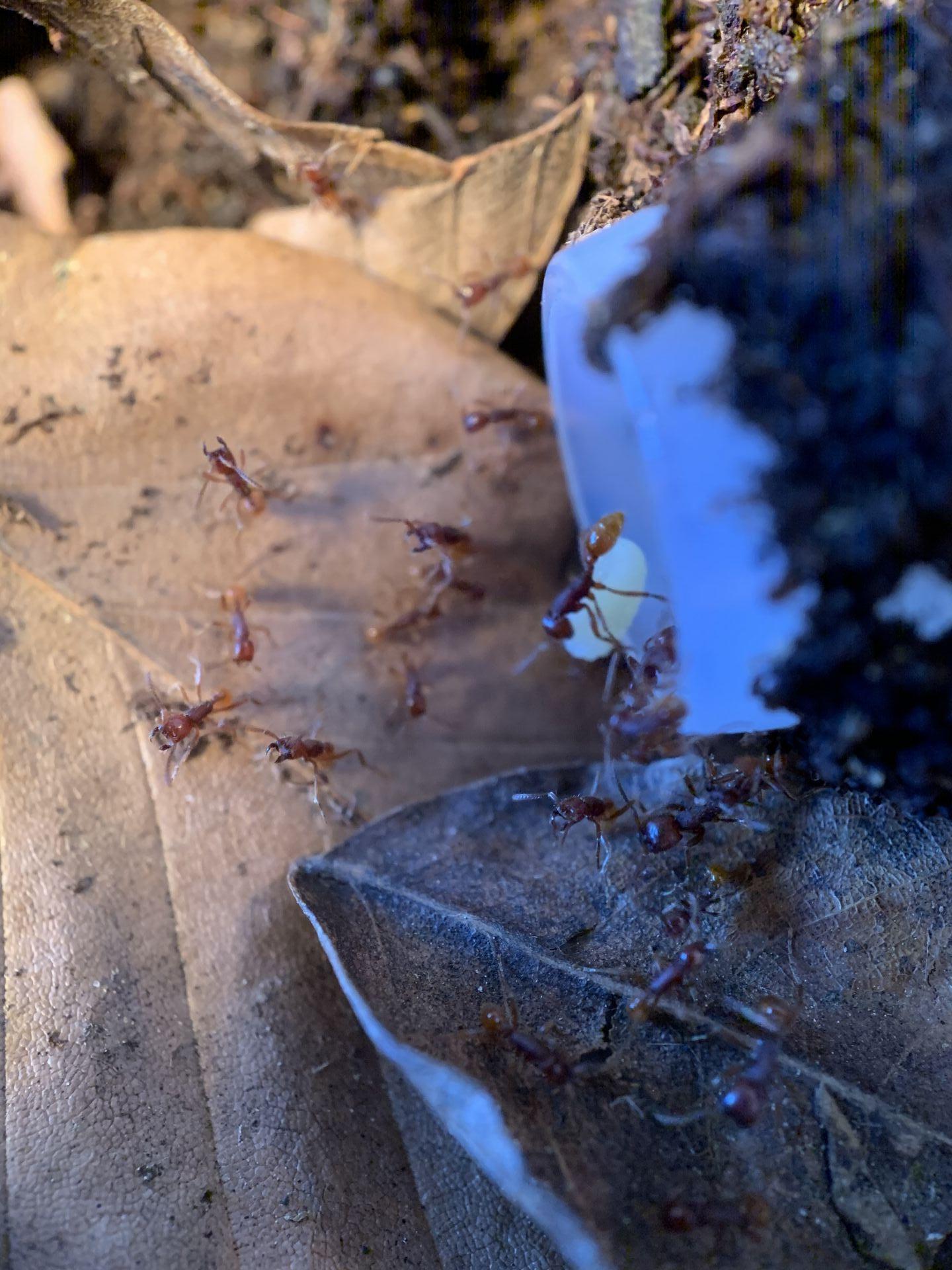
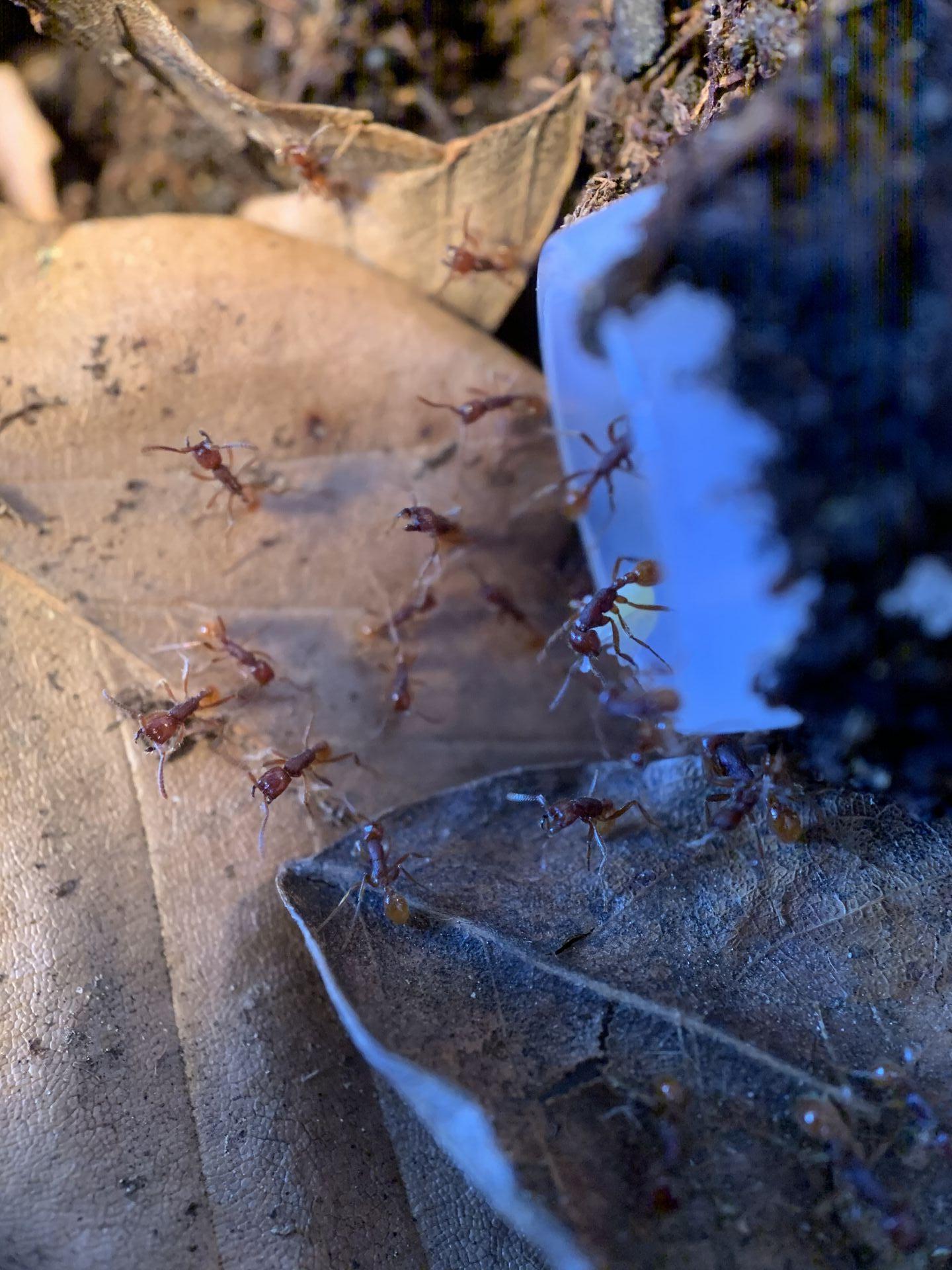
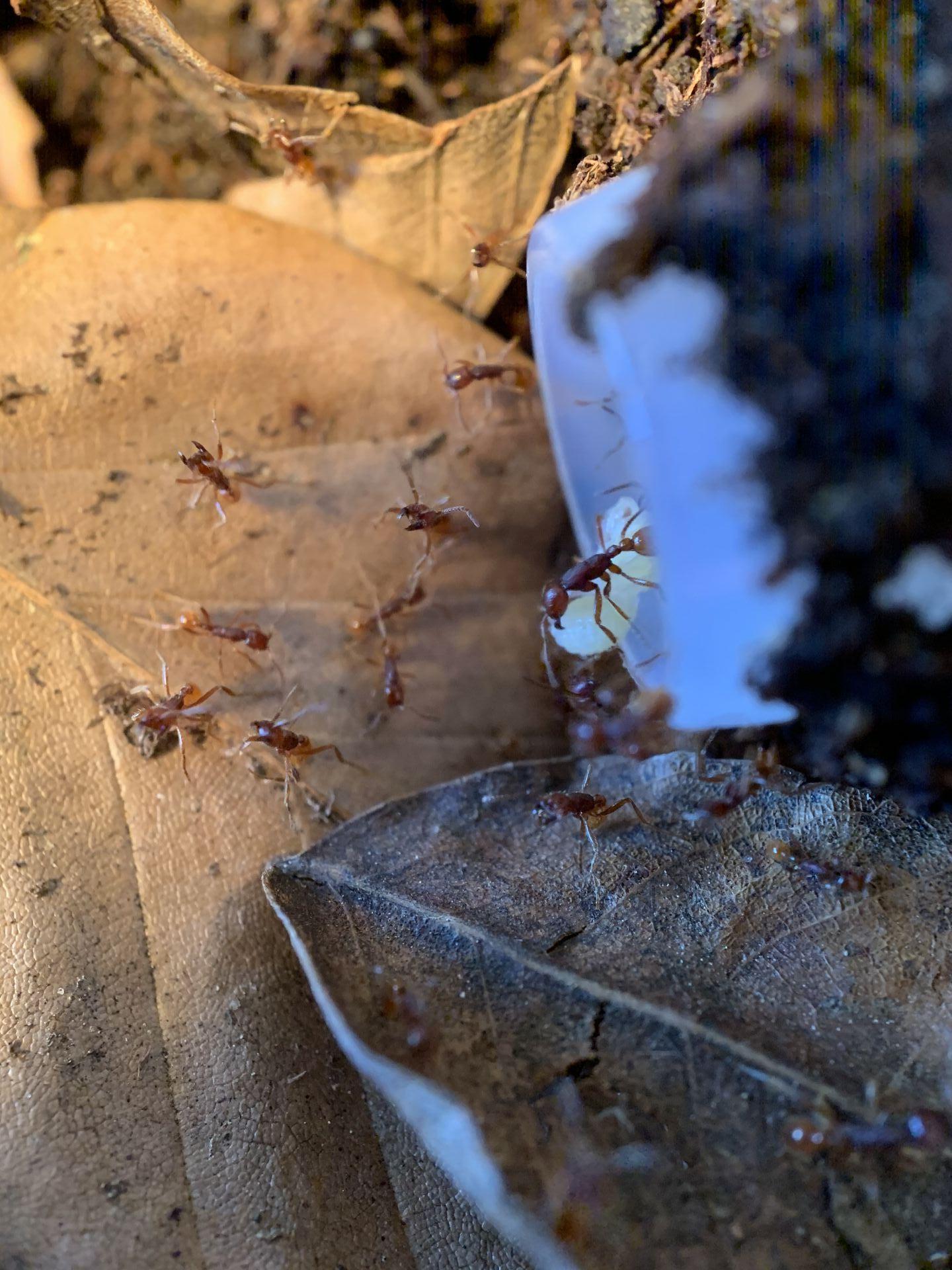
A few shots of brood-food being taken to nest while sisters are on guard duty...real army ant like!.
Maybe rename this journal to opacithorax?
Maybe rename this journal to opacithorax?
Yes, but I have not figured out yet how to do that. Do you know how?
You just edit the title by editing the first post.
Sent from my Pixel XL using Tapatalk
Thank you for your guidance.
Neivamyrmex opacithorax eggs which seem to be transitioning to larvae...finally. The eggs are kept in small clusters attended to by workers, which is similar to how food-brood is also enclosed in the bivouac mass of workers individually and collectively consumed.
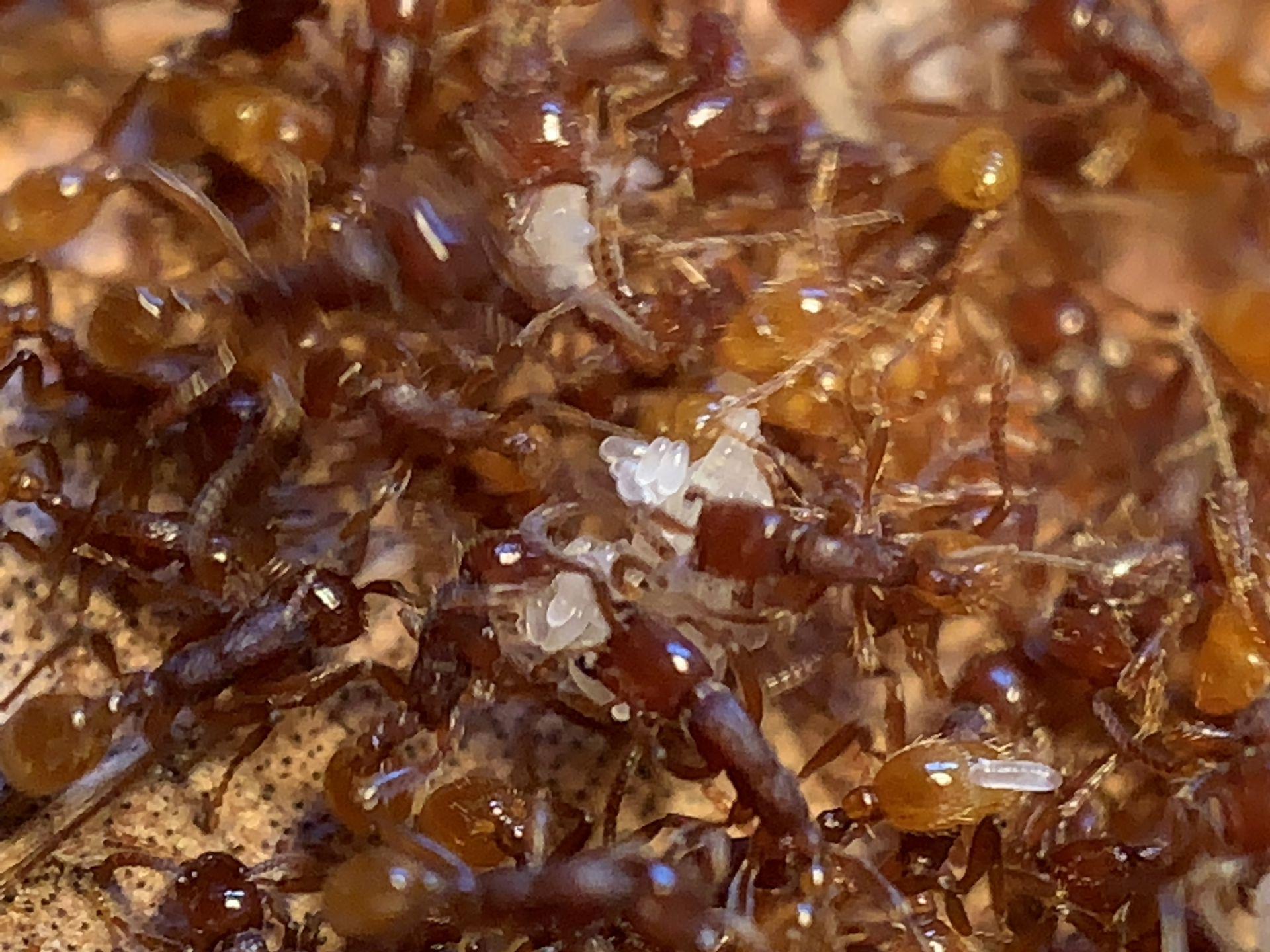
Neivamyrmex opacithorax eggs which seem to be transitioning to larvae...finally. The eggs are kept in small clusters attended to by workers, which is similar to how food-brood is also enclosed in the bivouac mass of workers individually and collectively consumed.
My Main Journal | My Neivamyrmex Journal | My Ant Adoption | My YouTube
Join the TennesseeAnts Discord Server! https://discord.gg/JbKwPgs
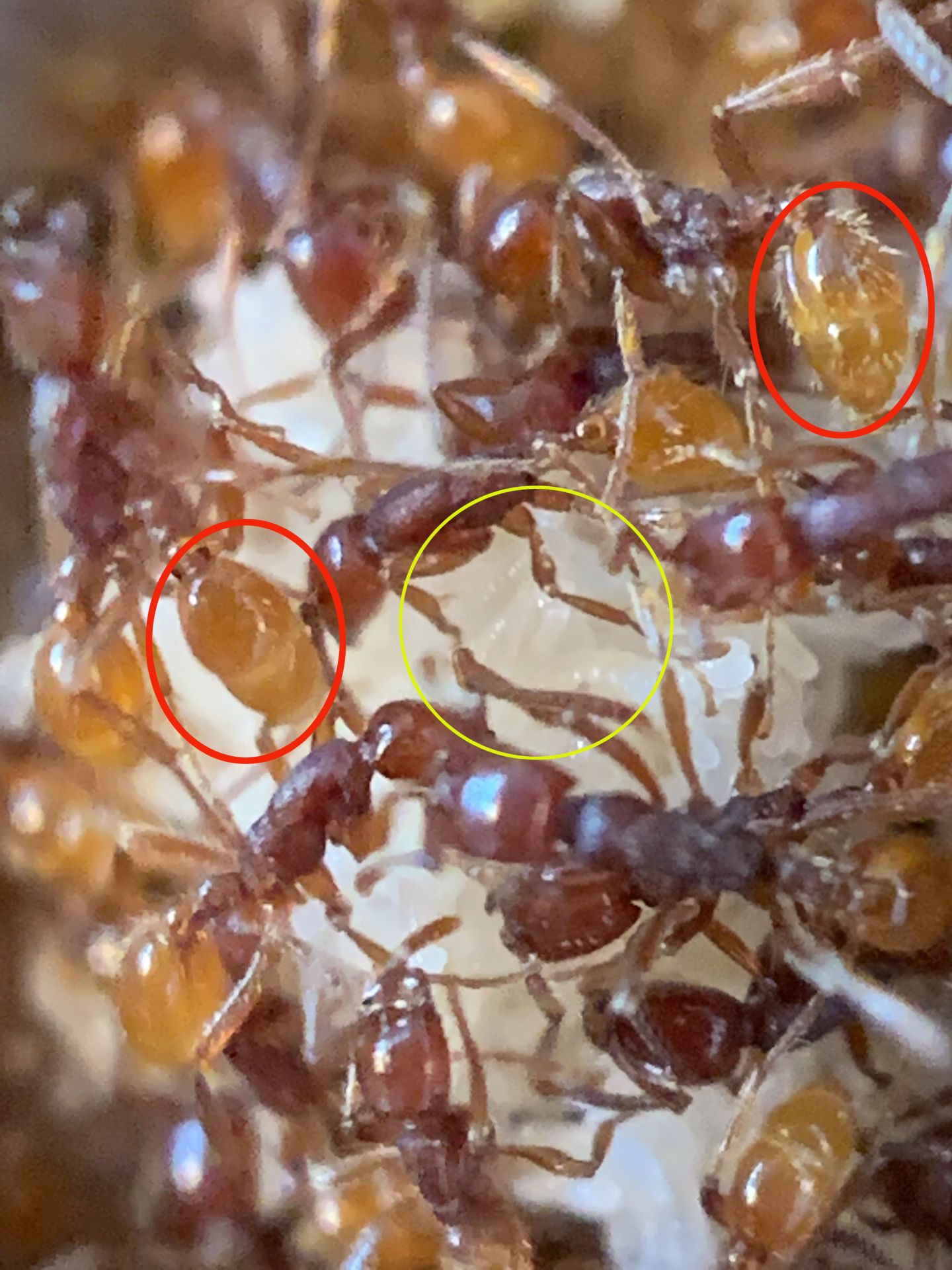
Edited by PurdueEntomology, May 12 2020 - 8:17 AM.
NOTE:
I have observed that the early instar larvae of N. opacithorax are kept in the bivouac as small clusters tended by workers. They are NOT placed on the brood-food to feed it seems, though I suspected they would have the larvae feed like that, similar to how a Stigmatoma would lay its larvae on a paralyzed centipede to feed. As noted in the above photos the brood attending workers have distended gasters which must be from engorging themselves. I am now under the suspicion that the early instar larvae are actually being fed directly by brood attending workers. Since upon two examinations of the bivouac I have NOT seen any larvae placed on any brood-food and the fact that attending workers have distended gasters I am inclined to think larvae are being fed directly. I have not read in the literature how Eciton-group type (Eciton, Nomamyrmex and Neivamyrmex) care for early or late instar larvae to confirm or deny my "hunch".
Mmmmm, they look like noodles XD I want to slurp them up! But in all seriousness, congrats man!! This is awesome!!
Keeps:
1:Pogonomymex occidentalis
4: Tetramorium immigrans
2 Reticulitermes flavipes
Mmmmm, they look like noodles XD I want to slurp them up! But in all seriousness, congrats man!! This is awesome!!
Thanks! I agree, they are awesome! Baby steps, baby steps, one day at a time.
0 members, 1 guests, 0 anonymous users